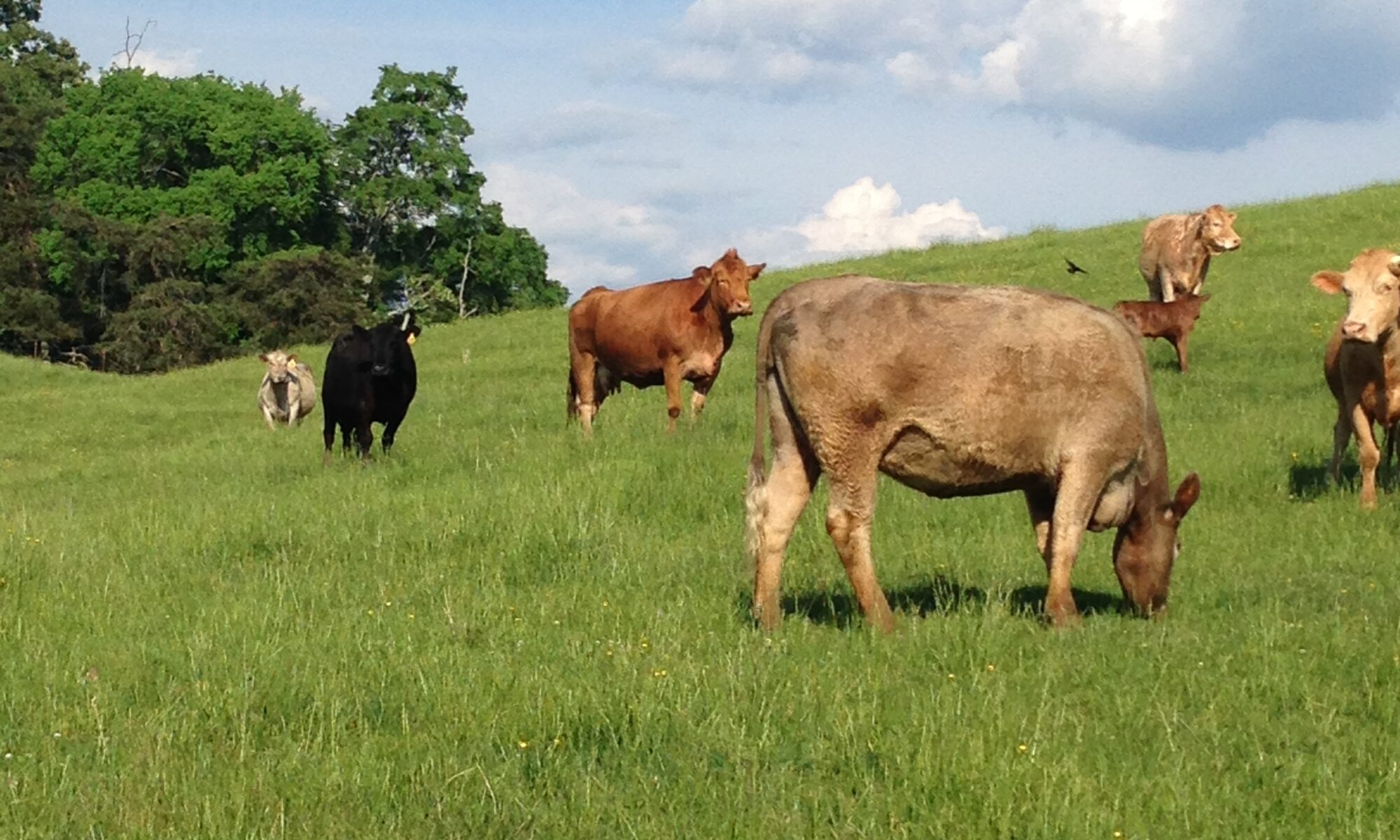

Dr. Saulo Zoca
Assistant Professor and Beef Cattle Reproduction Specialist
Department of Animal Science
P: 931-486-2129
The beef industry relies on animal performance for profitability. This is independent of whether you are a cow-calf producer, a backgrounder, a feedlot operation, or a packing plant. In general, to be profitable, females must be reproductively efficient, in other words, heifers must have their first calves around 24 months of age and calve every year thereon while in the operation. Additionally, bulls must reach puberty early and be able to pass a breeding soundness exam around 12 to 15 months of age. Feeder cattle must be efficient in converting feed into high quality, well marbled protein to produce a heavy carcass of high value. All areas of the beef industry are affected and can be influenced by developmental programing. The purpose of this article will be to address and summarize key points presented by Perry and Welsh (2024) concerning the impact of dam nutrition and stress management on the reproductive efficiency of their offspring.
When thinking of cattle profitability, for a cow-calf producer, Perry and Welsh (2024) describe in a recent review article that reproduction has the greatest economic impact, 5 to 10 times greater than growth or carcass traits. Nevertheless, for stockers and feeders, the balance changes where growth rates and feed to gain becomes the biggest player. In contrast, the packing plant profits from lean, highly marbled meat that doesn’t have excess trimming. While profit for each section of the beef industry is heavily influenced by different factors, all areas strive for efficiency in their specific sectors. For example, in cow-calf operations, the objective is to get more cows pregnant during the breeding season where most of those are set to calve early in the subsequent calving season, so they can wean more calves of a heavier weight, thus increasing total pounds weaned per cow exposed.
Before discussing some of the main effects of developmental programming on offspring performance, let’s understand what happens with the embryo during the early stages of pregnancy. The development of the embryo starts on day 0 of the estrous cycle, more specifically, when the cow stands in estrus with ovulation occurring approximately 30h after the first mount. Fertilization will occur in the oviduct shortly after ovulation and that embryo will develop there for 5 or 6 days until it migrates to the uterine horn. The embryo continues developing and around day 15 to 17, molecules related to maternal recognition of pregnancy are secreted by the embryo. A few days later, the embryo will begin to attach to the uterus and begin the process of placenta development. By day 42, the placenta will have formed and become fully attached to the uterus to allow for nutrient transfer between the dam and embryo. Several other key components of fetal development will follow, such as sex determination around day 39, production of germ cells (fetal sperm and eggs) between days 75 to 110, with the first follicles becoming visible on the fetal ovaries by day 180. In understanding the complexity of these events during early embryo formation, it’s easy to see how developmental programming can hinder or promote the success of appropriate development of the fetus and its reproductive organs.
While still in uterus, positive or negative environmental stimulus can change gene expression through various routes, such as by altering DNA methylation, histone acetylation, and/or expression of small non-coding RNAs in the developing calf. These changes are called fetal programming, and it has been studied in several species including humans, rats, and cattle. In the cow-calf segment, over- and under- feeding dams can impact the developing calf in adulthood that includes muscle growth, fat deposition, and metabolism, which can impact the whole beef cattle system. Studies have been developed to understand how restriction of nutrition can impact pregnant cows and their embryos in the beginning of gestation. The more likely impact of this early pregnancy nutrient restriction is pregnancy loss or embryonic mortality. Studies reported by Perry and Welsh explained that when heifers which were developed in dry-lots were moved to pasture following artificial insemination (AI), they had increased activity, lost weight, and suffered from decreased conception rates. Further, this reduction in nutrient intake (observed by weight loss) from AI to 6 days post-AI demonstrated that embryo development was impaired with decreased embryo quality, reduced total number of cells in those embryos, and a decreased proportion of cells in the embryo that were actually alive. In addition, the ovarian reserve of the offspring was negatively impacted when dams were restricted from days 11 to 110 of pregnancy. When this restriction happened in the last trimester of gestation, there was a reduction in the numbers of female offspring that conceived within the first 21-days of their first breeding season. On the contrary, dams fed 125% of their nutrient requirement during the second and third trimesters of pregnancy had more offspring that calved early in their first calving season. It is important to remember that heifers that conceive and consequently calve early (withing the first 21 days) in their first calving season have increased longevity in the herd and can produce heavier calves to their 6th calf compared to heifers that calve later in their first calving season. Therefore, nutrient restriction in heifers can have a multiple generational impact, as the dam can be “penalized” by pregnancy loss, and thus forced to calve later in their first calving season if they can conceive within that breeding season. Furthermore, the offspring generated by these restricted heifers that were able to maintain gestation would have their reproductive efficiency impaired.
Other stressors can also have detrimental impacts on offspring development and their lifetime reproductive efficiency. Dairy cows exposed to heat stress had female offspring that had altered nutrient partitioning, decreased mammary gland development, and consequently reduced milk production. Although milk production is not directly measured in beef cows, these changes in nutrient partitioning and milking ability could influence beef cows’ ability to develop and wean a heavy and healthy calf. In males, stress during gestation resulted in impaired production of hormones associated with reproduction and increase death of testicular cells. In rat models, semen characteristics were altered in offspring that suffered stress while developing in the uterus, such as decreases in percentage of motile, viable, total sperm produced, and the proportion of normal sperm. While similar results were not observed in bulls regarding semen characteristics when transportation stress was studied; however, there was an impact on embryo development where bulls that suffered prenatal stress had decreased production of in vitro fertilized embryos that developed to day 8 compared to non-stressed bulls. Thus, although semen characteristics seemed normal, there were molecular changes in sperm produced by these prenatally stressed bulls that impacted the development of a healthy embryo.
These studies highlighted by Perry and Welsh (2024) demonstrate that things we do before the calf is even born can impact how that calf will reproductively perform later in life. Therefore, while thinking about production efficiency and profitability of your operation, maintaining cows and heifers on a good plane of nutrition throughout the year where their developing offspring can have a favorable environment to thrive after it is born is essential. Further, it is recommended that your gestating females are managed in a way that minimizes a stressful environment so direct (pregnancy loss) or indirect (negative fetal programing) economic losses are minimized.
Reference:
Perry, G. A., & Welsh, T. H. (2024). The importance of developmental programming in the beef industry. Animal Reproduction Science, 265, 107488. doi: 10.1016/j.anireprosci.2024.107488